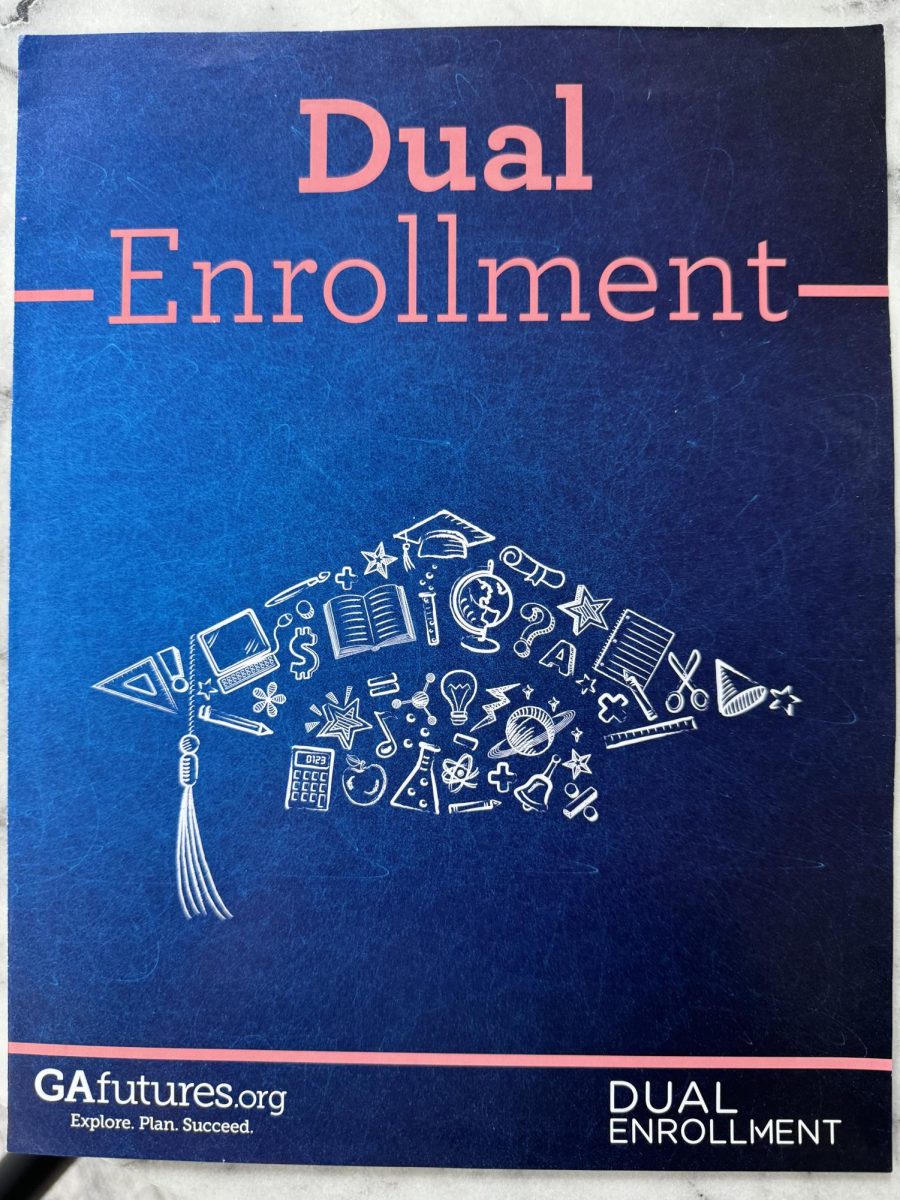Dual enrollment, an enticing option for juniors and seniors, allows upperclassmen to travel amongst different colleges and universities to obtain a higher level of education and immerse themselves in thorough academic content. Dual enrollment enables students to branch out, experience some of college life, create skills they could use later in life, and take courses they couldn’t take at Chamblee High School.
“I like [dual enrollment] a lot; it’s a lot of fun. The things that I’m learning in these classes are things that I will be able to take with me for my major in college. I find it fascinating to see the geometric applications of things like the matrix,” said Luke Simonsen (’25).
Students taking dual enrollment have mixed opinions, stating its pros and cons.
“I enjoy [dual enrollment], but I would change not being able to go to in-person classes because often it’s a bit of a hassle trying to go between school and college,” said Rasesh Joshi (’25).
However, students also enjoy the flexibility and leisure of dual enrollment.
“I like the amount of time I have on days I don’t have dual enrollment. I can just go home from school at the same time and work on my homework for two to three hours, sleep, do whatever I need, and get to school. It’s much more leisure,” said Ashrith Narayan (’24).
Dual enrollment allows for a bit of a change within the students’ schedules, enabling them to have free time in the mornings or afternoons and with their overall classes.
“I enjoy dual enrollment because I don’t have to be at school for my seventh periods, and I don’t have to come to school early; I have to be here [Chamblee High School] by 10:50, so I think that’s very nice,” said Shruti Nainwal (’24)
Students will be limited in the amount of Advanced Placement classes they can take. However, students gain a lot of free time, which is to be utilized for dual enrollment work or general homework.
“I would suggest dual enrollment to students as long as they are okay with not taking as many AP classes as normal. I have taken seven, whereas others take ten to twelve, but also, it is a lot of time that you have on your hands, so as long as you know how to utilize that, dual enrollment would be a good option,” said Nayaran.
Typical days for these dual enrollment students allow them to arrive later to school and have fewer classes, which they like.
“Typically, I would wake up at nine in the morning. I work on U.S. history in the morning, and then I go to school for the fourth period until seventh, and then I work on math after school,” said Joshi.
Similar schedules apply to students who may take remote dual enrollment classes.
“I wake up at nine, I come to school, I go home, and after school, I take all my classes, and I’ll sit down for an hour, two-three times a week, and I take notes from the video that gets posted online, and then I’ll work on my homework,” said Simonsen.
“I wake up around six or 6:30, and I’m doing dual through online, so I do not have actually to go to class, but I go to Starbucks, and I get all my dual work done, and then I come to school, and I think that is pretty nice, and I occasionally have to go through zooms and do like proctored exams, but because my dual classes are online it’s pretty nice,” said Nainwal.
Students have shared their opinions on the homework and course content, which is surprisingly more straightforward than one would presume.
“Even though you are taking a college class, [dual enrollment] reduces your course load because instead of taking seven classes, you can take three or four classes,” said Nainwal.
“The workload is not too bad; most of the time in class is spent taking notes on lectures posted online, and not very much is spent doing the actual homework. We have tests about every month,” said Simonsen.
Students taking dual enrollment speak highly of the program and suggest it to many of their peers. Dual enrollment also has added benefits besides the additional college courses and more vigorous content.
“Dual enrollment helps boost your GPA, it gives you more credits, and it can help you when applying to colleges because credits can transfer. Since I want to major in business, it will help me take fewer classes,” said Nainwal.
However, the application process has mixed opinions, some stating it was easy, whereas others disagree.
“It was so easy, I barely remember it; that’s how easy it was,” said Narayan.
“For GSU, it was a little different, but for Georgia Tech, I submitted the application halfway through the summer, and then they got back to me two weeks before school started, which was annoying,” said Simonsen.
“The application process is a little convoluted for a lot of these colleges because frequently there is a separate application through the school and the college, so that can get a little confusing at times, and I know a lot of people who weren’t able to do dual enrollment because of the weird application process. This made the process harder, especially in the beginning, to figure out schedule changes and misleading class titles,” said Joshi.
Overall, students mostly share enthusiastic and positive dual enrollment experiences. Most dual enrollment students recommend it for the extra freedom, flexibility, reduced class load, and more, even with minor setbacks.








